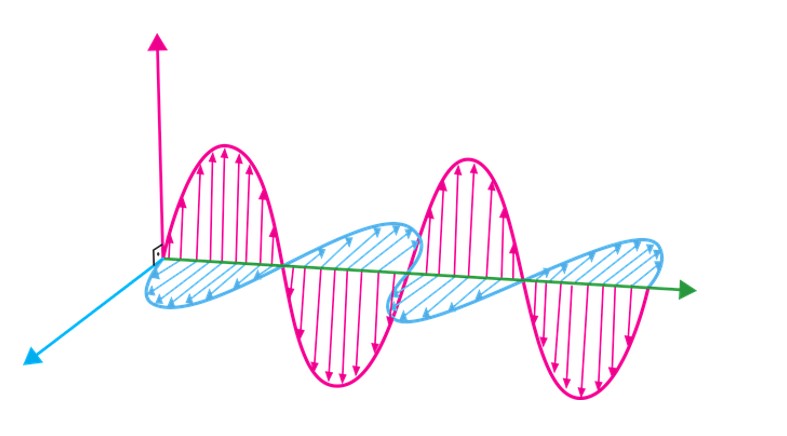In this vertical of physics, we will know the conversion process of radiant energy to chemical energy and its detailed facts.
Radiant energy and chemical energy are somewhat dependent on one another. Radiant energy is generally used to refer to the energy produced by radiations, whereas chemical energy is a form that is seen in atoms, bonds, or molecules. Usually, in photosynthesis, we will see this conversion of energy.
Now we will know the various facts of conversion of radiant energy to chemical energy.
Radiant energy: Definition
The definition of radiant energy is given as follows,
The form of energy obtained through electromagnetic waves are considered radiant energy, and they are usually emitted in the form of radiations.

To study the exciting facts about radiant energy.
Interesting facts about radiant energy
The various exciting facts about radiant energy are,
- The different carries of radiant energy are UV rays, IR rays, X-rays, microwaves, and visible light.
- Radiant energy can be sometimes visible to the observer, and sometimes it may not be visible; it entirely depends on the source of energy.
- The fundamental source of radiant energy is the radiations is sun, which is a form of light wave. Hence, we can tell that they always travel in a straight path.
- Radiations can penetrate solids, liquids, and gases, and even radiant energy holds this property.
- Radiant energy can even be reflected when there is no source of absorption.

Now to study the detailed explanation of radiant energy to chemical energy.
Read More: Examples of Electromagnetic Waves
Chemical Energy: Definition and facts
The chemical energy signifies the changes of the energy that is stored in atoms or molecules or bonds of chemical compounds.
In general, chemical energy can be defined as the source of energy that helps prepare food in plants or that energy that helps in the functioning process of the human body.

To understand the aspects of both energies.
What is radiant energy to chemical energy?
The conversion process in which radiant energy changes to chemical energy is one of the main process which is mainly observed in every plants for their survival.
The fundamental source of food for plants is, in general obtained through a process called photosynthesis. It is a primary example of conversion of radiant to chemical energy. The radiant energy is obtained from the sun in the form of radiations that strikes the plant, and a chemical reaction occurs, forming glucose.

To deeply understand the transformation process of radiant energy to chemical energy.
What process is radiant energy to chemical energy?
The process of radiant energy to chemical energy is a conversion of the energy process.
The conversion of radiant energy to chemical energy is mainly considered a chemical process that involves the intake of radiation from a source. It undergoes specific reactions leading to the result of chemical energy.
To study the conversion process of radiant energy to chemical energy.
How to convert radiant energy to chemical energy?
Mainly this type of conversion can be seen in the food building process of plants called photosynthesis.
Usually, we know that the sun acts as a primary source of light; many radiations emit from the light rays; when these light rays strike the plants, a chemical reaction occurs. Here, one must notice that radiant energy which is obtained from the sun is used by the plants and gets transformed into chemical energy. It also uses water carbon dioxide and produces glucose in plants.
To understand the conversion of radiant energy to chemical energy.
How is radiant energy converted into chemical energy?
Radiant energy and chemical energy conversion go hand in hand.
If we consider a simple food to prepare, we need some source of heat to give it extra taste. Even in the case of plants, they will utilize the provided amounts of radiation from the primary sources by preparing food for plants by photosynthesis. The obtained food will be in sugar or glucose, which is produced due to the results.
To learn the difference between chemical energy and radiant energy.
What is the significant difference between chemical energy and radiant energy?
The significant difference between radiant energy and chemical energy is given below,
The electromagnetic energy derived from the various radiations can be termed as radiant energy; these radiations are emitted through some primary source that strikes particular objects and gets converted into chemical energy. Mainly it can be observed in plant species. Whereas chemical energy refers to energy storage in the bonds and atoms.
To study the examples of radiant energy and chemical energy.
What is a simple example of radiant energy to chemical energy?
The definite and prominent example of radiant energy to chemical energy that we find around us is observed in a unique process called photosynthesis.
Apart from this photosynthesis, any other process caused by the radiations that cause chemical reactions undergoes this form of energy conversion. As the sun will be the primary source of radiant energy, all the process that uses this source will be an example of brilliant chemical energy conversion.
The above facts will give a detailed insight of radiant energy to chemical energy.
Read More:
Frequently Asked Questions | FAQs
Define radiant energy as simple words in physics?
Radiant energy in physics can be defined in simple words as follows,
Radiant energy will usually be produced from electromagnetic radiations, as the name infers. All the electromagnetic radiations present in the electromagnetic spectrum possess this energy. The radiant energy can be seen in radio waves, microwaves, UV-rays, IR rays, etc. The energy is usually observed around the source.
Define chemical energy as simple words in physics?
In a simple definition, chemical energy can be defined as follows,
Usually, chemical energy is found in atoms or molecules or the bonds of chemical substances. The chemical energy is the resulting product of a specific chemical reaction. After this result of chemical energy, the whole chemical compound is completely transformed into a new one. In all the food products, we can observe chemical energy.
Can we tell that both radiant and solar energy are the same?
Both radiant energy and solar energy are different from one another.
Radiant energy is usually obtained from the radiations emitted from electromagnetic waves. This form of energy is generally seen near nuclear stations, solar panels, etc. At the same time, chemical energy is usually stored in bonds that help to perform various actions.
Also Read:
- Why are led lights more energy efficient compared to incandescent bulbs
- Active solar energy examples
- Example of mechanical to kinetic energy
- How to calculate energy in a thermoelectric material
- How to calculate energy barriers in chemical reactions
- How to extend chemical energy storage life in rechargeable batteries
- How to determine energy in a synchrotron light source
- How to estimate the magnetic energy dissipation in inductive charging systems
- How to find renewable energy
- Is mechanical energy conserved in an inelastic collision

I am Raghavi Acharya, I have completed my post-graduation in physics with a specialization in the field of condensed matter physics. I have always considered Physics to be a captivating area of study and I enjoy exploring the various fields of this subject. In my free time, I engage myself in digital art. My articles are aimed towards delivering the concepts of physics in a very simplified manner to the readers.